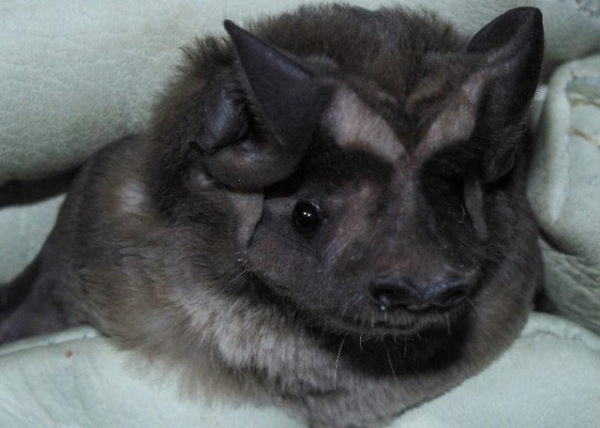More than Half of North American Bats at Risk: Groundbreaking Study Calls for International Action
Washington D.C. – Last night, The State of the Bats in North America, the companion study to the 2023 report, identifies major threats to North American Bats and calls for urgent, coordinated support and action across Canada, the United States, and Mexico. The findings indicate the greatest impacts to threatened bat species include climate change, disease, wind energy production, and land-use change.
Key takeaways from the study include:
- 53% of North American bat species are estimated to be at moderate to very high risk of extinction within 15 years.
- 90% of North American bat species are estimated to have populations that have likely decreased over the past 15 years, indicating that conservation action is urgently needed in all three countries.
- 24% of North American bat species have transnational ranges across one or more international boundaries within Canada, the U.S., and Mexico, making international collaboration crucial to conservation planning at relevant range-wide scales.
- Climate change is considered the number one threat to North American bats.
“It’s nothing short of alarming that over half of North America’s bat species are at serious risk of collapse and need urgent conservation action,” said Dr. Winifred Frick, Chief Scientist at Bat Conservation International, and an author of the study. “One of the clearest outcomes of this research is that many threats can only be addressed through international collaboration since bats and the threats they face do not recognize political borders.”
This newly published study outlines how the North American Bat Conservation Alliance identified 102 experts to evaluate the conservation status of 153 bat species and their threats in Canada, the U.S., and Mexico. This assessment provides a baseline for measuring the health of North American bat species that can be used to track future trends and inform conservation actions. While the results highlight areas of concern for biodiversity, the study also presents strategies for addressing common threats as an international community.
“Bats are essential to ecosystem health. State fish and wildlife agencies have a critical role to play in recovering imperiled species of bats, fish and other wildlife and preventing species from becoming further endangered. But without adequate funding for programs, such as State Wildlife Action Plans, states and other partners are fighting an uphill battle,” said Judith Camuso, Commissioner of the Maine Department of Inland Fisheries and Wildlife and President of the Association of Fish & Wildlife Agencies (AFWA). “We look forward to working with our partners in collaborative efforts to support bat conservation throughout North America.”
State fish and wildlife agencies have designated nearly 100 different kinds of bats as species in greatest conservation need in State Wildlife Action Plans, providing proactive solutions to conserve bats and other wildlife species of greatest conservation need. However, without adequate funding, state wildlife agencies will not be able to fully implement their plans to prevent wildlife from becoming further threatened or endangered. The Association supports legislation that provides additional funding for states to take proactive steps to support the recovery of at-risk species, including the bipartisan Recovering America’s Wildlife Act (S.1149), which was reintroduced by Senators Heinrich (D-N.M.) and Tillis (R-N.C.), which would provide states with the necessary resources to improve the outlook for North American bats.
“The study reveals a concerning future for our North American bat populations,” said Leanne Burns, AFWA Bat Conservation Coordinator and another co-author on the study. “But through proactive and internationally collaborative actions, robust wildlife conservation policy, and dedicated funding we can prioritize conservation efforts to change the current trajectory for bats.”
The State of the Bats in North America study is published in the Annals of the New York Academy of Sciences and provides the most comprehensive assessment of North American bats to date. It was produced by the North American Bat Conservation Alliance, representing a consortium of government agencies in Canada, the U.S., and Mexico, as well as private organizations committed to bat conservation. Major contributors to this study include scientists from Bat Conservation International (BCI), the North American Bat Monitoring Program; the White-nose Syndrome Response Team; the U.S. Fish and Wildlife Service, the Canadian Wildlife Service (Environment and Climate Change Canada); and the National Autonomous University of Mexico.
To read this study in its entirety, please go to: https://nyaspubs.onlinelibrary.wiley.com/doi/10.1111/nyas.15225




